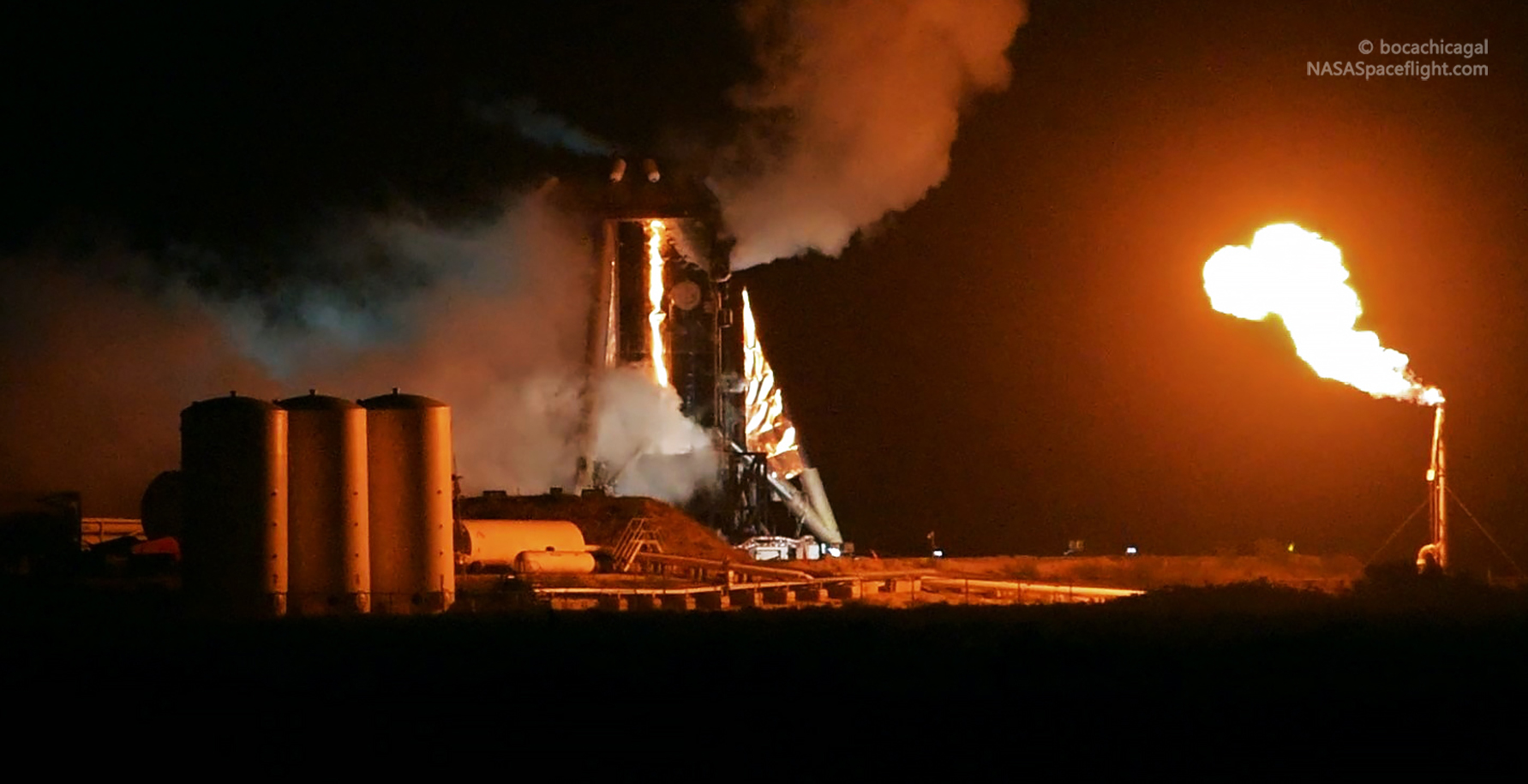

News
SpaceX’s next Starhopper flight needs more analysis for FAA go-ahead, says Elon Musk
According to SpaceX CEO Elon Musk, the company’s next major Starhopper flight test is still awaiting FAA approval due to a need for more hazard analysis, presumably required because Starhopper will be traveling much higher than before.
On August 9th, SpaceX completed a routine wet dress rehearsal (WDR) with Starhopper, loading the vehicle with propellant and fluids and replicating a launch countdown up to the point of Raptor ignition. Starhopper remains untethered in a sign that SpaceX doesn’t have plans for a static fire test before the low-fidelity rocket prototype’s next flight milestone. Originally scheduled for August 12th, that milestone – a 200m (650 ft) hop test – has been indefinitely delayed as SpaceX awaits an updated permit from the Federal Aviation Administration (FAA).
The oddity of the apparent difficulty SpaceX is having with the FAA’s experimental permit process is deepened by the fact that Starhopper is already permitted by the FAA and demonstrated its first successful flight just a few weeks ago, on July 25th. On top of the fact that the local Boca Chica and Brownsville, Texas airspace tends to be extremely quiet, it’s unclear what exactly is holding up SpaceX, the FAA, or both in what should otherwise be a relatively streamlined process.
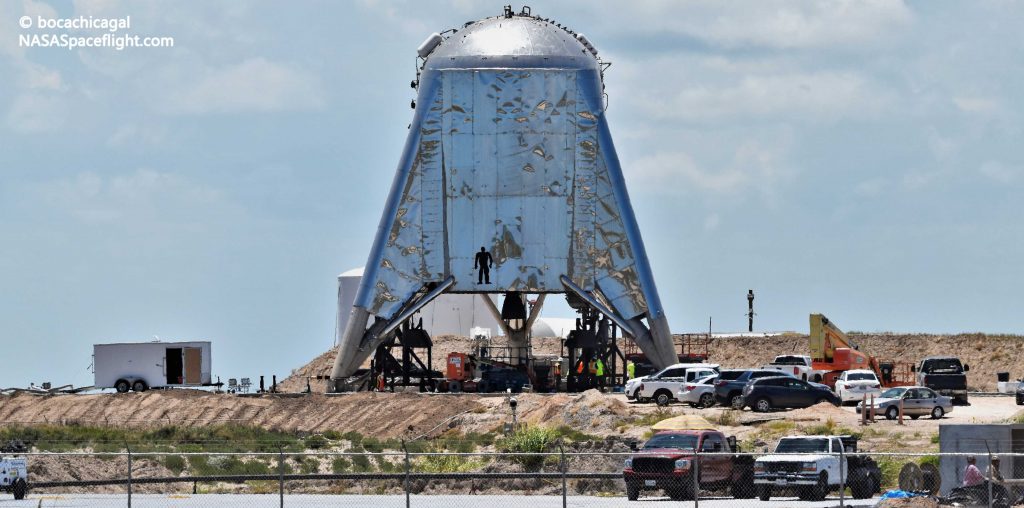
A few weeks ago, after one false start on July 24th, Starhopper performed its first untethered flight ever on July 25th, successfully demonstrating its integrated steel propellant tanks, avionics, software, and Raptor propulsion over the course of 20 or so seconds of flight. Starhopper’s inaugural flight was delayed at least several weeks by a major bug with SpaceX’s next-gen Raptor engine, described by Elon Musk as a problem with a certain frequency of vibration (i.e. mechanical resonance).
According to Musk, said resonance failure mode was effectively solved with unspecified modifications made to the sixth Raptor engine produce (Raptor SN06). That engine became the first to successfully pass SpaceX’s regime of pre-hop static fires in McGregor, Texas around July 10th and was shipped south to Boca Chica and installed on Starhopper scarcely 24 hours later.
Assuming those vibration issues have been completely quashed, Musk has also stated that SpaceX is aiming to produce as many as two Raptor engines per day by the end of 2019. It’s believed that all engines preceding SN06 (SN01-05) were either damaged or destroyed during testing, be that a result of intentional testing-to-destruction or anomalous behavior during certain test regimes. It should be noted that full-scale Raptor is still undoubtedly in development and hardware failure during developmental testing is more predictable and valuable than it might seem. As long as the program can handle it, ‘hardware-rich’ development (i.e. moving fast and breaking things) can be equally – if not more – valuable than an extremely cautious get-it-right-the-first-time approach.
Regardless, once SpaceX’s propulsion engineering team is confident that the more major bugs that plagued early Raptor engines have been alleviated, they will likely give the go-ahead for the engine manufacturing team to begin ramping production rates. Musk believes that SpaceX could be ready for the first test flights of either or both of the company’s orbital Mk1 and Mk1 Starship prototypes as early as mid-September, milestones that will eventually require three sea-level Raptor engines and up to three vacuum Raptor engines per rocket.
Meanwhile, although SpaceX has yet to begin assembling the first Super Heavy booster(s), said boosters will require dozens of Raptor engines each for their first flights. Musk says that SpaceX will start out with something like 20 Raptor engines per booster to minimize losses and disruption in the event of a catastrophic failure, eventually expanding to as many as 35 engines per booster as confidence grows.
For now, Starhopper’s next flight test was scheduled from August 16th through the 18th but has since been tentatively rescheduled to Aug. 19-21. Starhopper will remain grounded until the FAA is satisfied with SpaceX’s updated hazard analyses for the rocket’s 200m flight test.
Check out Teslarati’s Marketplace! We offer Tesla accessories, including for the Tesla Cybertruck and Tesla Model 3.
Elon Musk
Tesla scrambles after Musk sidekick exit, CEO takes over sales
Tesla CEO Elon Musk is reportedly overseeing sales in North America and Europe, Bloomberg reports.

Tesla scrambled its executives around following the exit of CEO Elon Musk’s sidekick last week, Omead Afshar. Afshar was relieved of his duties as Head of Sales for both North America and Europe.
Bloomberg is reporting that Musk is now overseeing both regions for sales, according to sources familiar with the matter. Afshar left the company last week, likely due to slow sales in both markets, ending a seven-year term with the electric automaker.
Tesla’s Omead Afshar, known as Elon Musk’s right-hand man, leaves company: reports
Afshar was promoted to the role late last year as Musk was becoming more involved in the road to the White House with President Donald Trump.
Afshar, whose LinkedIn account stated he was working within the “Office of the CEO,” was known as Musk’s right-hand man for years.
Additionally, Tom Zhu, currently the Senior Vice President of Automotive at Tesla, will oversee sales in Asia, according to the report.
It is a scramble by Tesla to get the company’s proven executives over the pain points the automaker has found halfway through the year. Sales are looking to be close to the 1.8 million vehicles the company delivered in both of the past two years.
Tesla is pivoting to pay more attention to the struggling automotive sales that it has felt over the past six months. Although it is still performing well and is the best-selling EV maker by a long way, it is struggling to find growth despite redesigning its vehicles and launching new tech and improvements within them.
The company is also looking to focus more on its deployment of autonomous tech, especially as it recently launched its Robotaxi platform in Austin just over a week ago.
However, while this is the long-term catalyst for Tesla, sales still need some work, and it appears the company’s strategy is to put its biggest guns on its biggest problems.
News
Tesla upgrades Model 3 and Model Y in China, hikes price for long-range sedan
Tesla’s long-range Model 3 now comes with a higher CLTC-rated range of 753 km (468 miles).
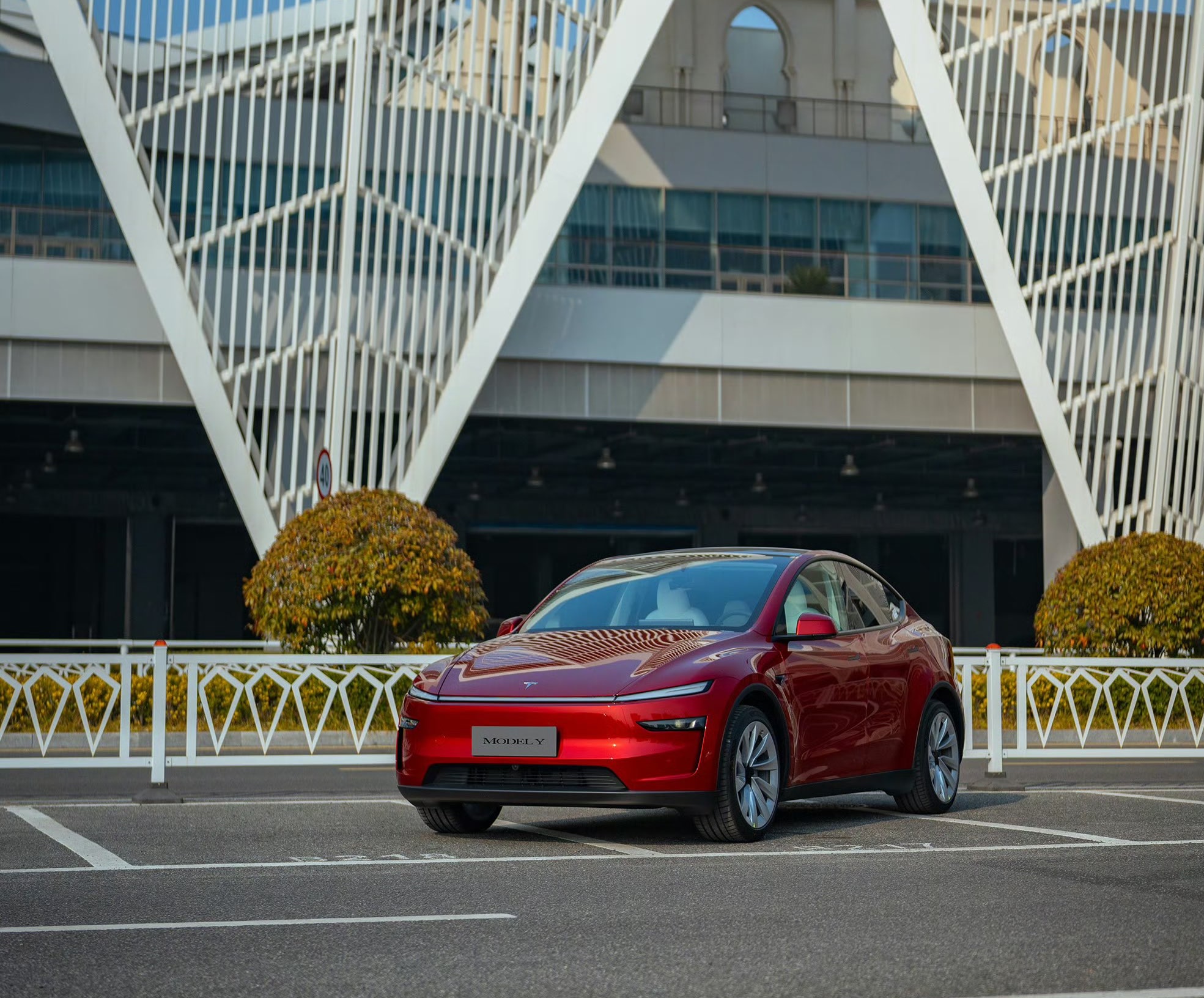
Tesla has rolled out a series of quiet upgrades to its Model 3 and Model Y in China, enhancing range and performance for long-range variants. The updates come with a price hike for the Model 3 Long Range All-Wheel Drive, which now costs RMB 285,500 (about $39,300), up RMB 10,000 ($1,400) from the previous price.
Model 3 gets acceleration boost, extended range
Tesla’s long-range Model 3 now comes with a higher CLTC-rated range of 753 km (468 miles), up from 713 km (443 miles), and a faster 0–100 km/h acceleration time of 3.8 seconds, down from 4.4 seconds. These changes suggest that Tesla has bundled the previously optional Acceleration Boost for the Model 3, once priced at RMB 14,100 ($1,968), as a standard feature.
Delivery wait times for the long-range Model 3 have also been shortened, from 3–5 weeks to just 1–3 weeks, as per CNEV Post. No changes were made to the entry-level RWD or Performance versions, which retain their RMB 235,500 and RMB 339,500 price points, respectively. Wait times for those trims also remain at 1–3 weeks and 8–10 weeks.
Model Y range increases, pricing holds steady
The Model Y Long Range has also seen its CLTC-rated range increase from 719 km (447 miles) to 750 km (466 miles), though its price remains unchanged at RMB 313,500 ($43,759). The model maintains a 0–100 km/h time of 4.3 seconds.
Tesla also updated delivery times for the Model Y lineup. The Long Range variant now shows a wait time of 1–3 weeks, an improvement from the previous 3–5 weeks. The entry-level RWD version maintained its starting price of RMB 263,500, though its delivery window is now shorter at 2–4 weeks.
Tesla continues to offer several purchase incentives in China, including an RMB 8,000 discount for select paint options, an RMB 8,000 insurance subsidy, and five years of interest-free financing for eligible variants.
News
Tesla China registrations hit 20.7k in final week of June, highest in Q2
The final week of June stands as the second-highest of 2025 and the best-performing week of the quarter.
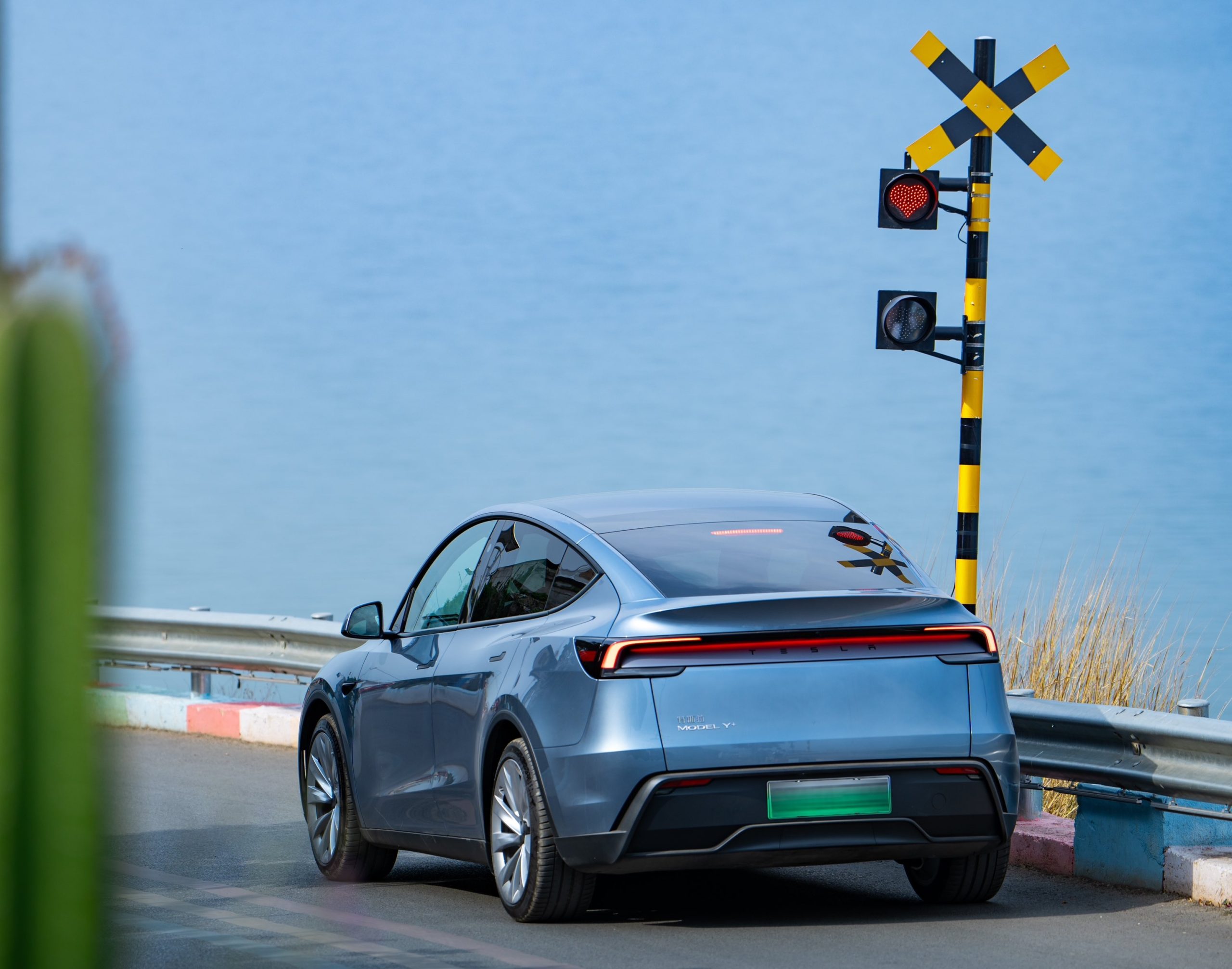
Tesla China recorded 20,680 domestic insurance registrations during the week of June 23–29, marking its highest weekly total in the second quarter of 2025.
The figure represents a 49.3% increase from the previous week and a 46.7% improvement year-over-year, suggesting growing domestic momentum for the electric vehicle maker in Q2’s final weeks.
Q2 closes with a boost despite year-on-year dip
The strong week helped lift Tesla’s performance for the quarter, though Q2 totals remain down 4.6% quarter-over-quarter and 10.9% year-over-year, according to industry watchers. Despite these declines, the last week of June stands as the second-highest of 2025 and the best-performing week of the quarter.
As per industry watchers, Tesla China delivered 15,210 New Model Y units last week, the highest weekly tally since the vehicle’s launch. The Model 3 followed with 5,470 deliveries during the same period. Tesla’s full June and Q2 sales data for China are expected to be released by the China Passenger Car Association (CPCA) in the coming days.
Tesla China and minor Model 3 and Model Y updates
Tesla manufactures the Model 3 and Model Y at its Shanghai facility, which provides vehicles to both domestic and international markets. In May, the automaker reported 38,588 retail sales in China, down 30.1% year-over-year but up 34.3% from April. Exports from Shanghai totaled 23,074 units in May, a 32.9% improvement from the previous year but down 22.4% month-over-month, as noted in a CNEV Post report.
Earlier this week, Tesla introduced minor updates to the long-range versions of the Model 3 and Model Y in China. The refreshed Model 3 saw a modest price increase, while pricing for the updated Model Y Long Range variant remained unchanged. These adjustments come as Tesla continues refining its China lineup amid shifting local demand and increased competition from domestic brands.
-

 Elon Musk22 hours ago
Elon Musk22 hours agoTesla investors will be shocked by Jim Cramer’s latest assessment
-

 News6 days ago
News6 days agoTesla Robotaxi’s biggest challenge seems to be this one thing
-

 News2 weeks ago
News2 weeks agoTesla’s Grok integration will be more realistic with this cool feature
-

 Elon Musk2 weeks ago
Elon Musk2 weeks agoElon Musk slams Bloomberg’s shocking xAI cash burn claims
-

 News2 weeks ago
News2 weeks agoTesla China roars back with highest vehicle registrations this Q2 so far
-

 News2 weeks ago
News2 weeks agoTesla dominates Cars.com’s Made in America Index with clean sweep
-

 News2 weeks ago
News2 weeks agoTexas lawmakers urge Tesla to delay Austin robotaxi launch to September
-
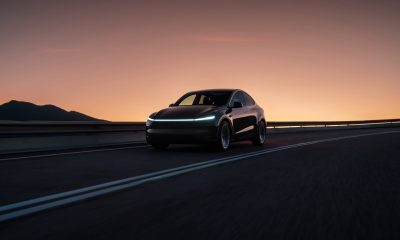
 News2 weeks ago
News2 weeks agoTesla firmware shows new Model Y seat configuration is coming















